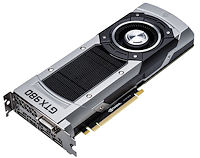 NVIDIA has launched its newest Maxwell GPU. There will be two new GPUs, the GeForce GTX 980 and GeForce GTX 970. These next generation GPUs usher in new features and performance that move the gaming industry forward. Reviews are coming in from around the internet and, as always, we have rounded up a large number of reviews and we’ve posted the links to them below for your convenience.
NVIDIA has launched its newest Maxwell GPU. There will be two new GPUs, the GeForce GTX 980 and GeForce GTX 970. These next generation GPUs usher in new features and performance that move the gaming industry forward. Reviews are coming in from around the internet and, as always, we have rounded up a large number of reviews and we’ve posted the links to them below for your convenience.
Video Cards
 The new GeForce 344.11 WHQL drivers are now available to download automatically through GeForce Experience, and from GeForce.com. These new drivers give GeForce GTX owners the ultimate gaming experience in the latest blockbuster titles, including Borderlands: The Pre-Sequel, The Evil Within, F1 2014 and Alien: Isolation, and add support for the brand new, Maxwell-powered GeForce GTX 980 and GeForce GTX 970, the world’s most advanced graphics cards. Additionally, GeForce 344.11 WHQL drivers add support for NVIDIA G-SYNC Surround displays, making your gaming experience more realistic and immersive than ever before.
The new GeForce 344.11 WHQL drivers are now available to download automatically through GeForce Experience, and from GeForce.com. These new drivers give GeForce GTX owners the ultimate gaming experience in the latest blockbuster titles, including Borderlands: The Pre-Sequel, The Evil Within, F1 2014 and Alien: Isolation, and add support for the brand new, Maxwell-powered GeForce GTX 980 and GeForce GTX 970, the world’s most advanced graphics cards. Additionally, GeForce 344.11 WHQL drivers add support for NVIDIA G-SYNC Surround displays, making your gaming experience more realistic and immersive than ever before.
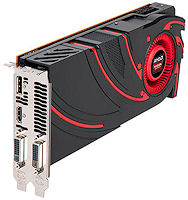 AMD has released the Radeon R9 285 graphics card. It comes packed with the latest Graphics Core Next (GCN) Architecture1 innovations like support for the upcoming DirectX 12 and AMD’s revolutionary Mantle API3. The newest addition to the Radeon family features an engine clock speed of 918 MHz, and 2 GB of frame buffer running at 5.5 Gbps. The Radeon R9 285 GPU is capable of delivering up to 3.29 teraFLOPS of computing performance, offering extreme gaming detail that outshines any card at 1080p and beyond in its category.
AMD has released the Radeon R9 285 graphics card. It comes packed with the latest Graphics Core Next (GCN) Architecture1 innovations like support for the upcoming DirectX 12 and AMD’s revolutionary Mantle API3. The newest addition to the Radeon family features an engine clock speed of 918 MHz, and 2 GB of frame buffer running at 5.5 Gbps. The Radeon R9 285 GPU is capable of delivering up to 3.29 teraFLOPS of computing performance, offering extreme gaming detail that outshines any card at 1080p and beyond in its category.
A number of reviews have become available featuring cards from various manufacturers. You can check out the various reviews via the links posted below.
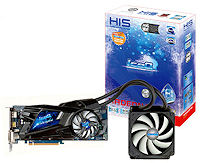 By: Hilbert Hagedoorn @ GURU3D
By: Hilbert Hagedoorn @ GURU3D
In this review we will benchmark and test HIS Radeon R9-290X Hybrid ICEQ edition. The card uses liquid cooling for the GPU that runs towards a 120mm radiator. On the card itself there still is a small fan that blows air over the VRM area and other components. As a result this card will remain under 80 Degrees C at full load, and does so whilst being factory clocked to a nice 1100 MHz. Under SKU code H290XQH4GD the product will be released with 4 GB of graphics memory.
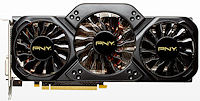 Author: SKYMTL @ Hardware Canucks
Author: SKYMTL @ Hardware Canucks
Though they are normally associated with being one of the few board partners entrusted with NVIDIA’s Quadro lineup, PNY also has a relatively large and expanding stable of GeForce products as well. The GTX 780 Ti XLR8 OC is their flagship single GPU card and while it doesn’t have a well-marketed name like Classified, Matrix, Lightning or Super Overclock but unlike those indirect competitors, its price is quite a bit lower. PNY intends the XLR8 OC series to compete against the likes of ASUS’ DirectCU II OC, Gigabyte’s Windforce OC and MSI’s Gaming-branded cards. In the face of such entrenched competition, the GTX 780 Ti XLR8 OC will need to emphasize its relative value.
 Source: techPowerUp!
Source: techPowerUp!
NVIDIA has made available a new WHQL-certified graphics card driver, the GeForce 340.52. This release is recommended for Metro: Redux and Final Fantasy XIV, it brings multiple new and updated SLI profiles and allows the streaming of PC games to the just-released SHIELD tablet. The GeForce 340.52 has support for the GeForce 8, 9, 100, 200, 300, 400, 500, 600 and 700 Series cards and for the ION and ION LE GPUs.
You can download the GeForce 340.52 WHQL drivers from the GeForce website.
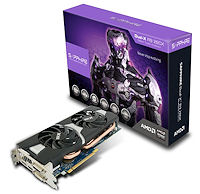 By Steven Kean @ Legit Reviews
By Steven Kean @ Legit Reviews
The AMD Radeon R9 2xx series has been out since October 2013, and we are continuing to see new versions of the R9 200 series. The R9 280 series is basically a rebranded Radeon HD 7950 with a few tweaks. Powered by a single 28nm Tahiti XTL GPU, it features 1792 Stream processors running at 850MHz with a boost to 940Mhz. Compared to the reference R9 280 of 827MHz and 933MHz boost. It’s memory consists of 3GB GDDR clocked at 5000Mhz. To keep the card cool, Sapphire has switched from their Tri-X Cooling technology to Dual-X cooling, which has two fans. This overclocked edition is currently available as part 11230-00-40G for $239.99 shipped which includes Sapphires 2 year warranty.
 By: Hilbert Hagedoorn @ GURU3D
By: Hilbert Hagedoorn @ GURU3D
A while ago NVIDIA launched the GeForce GTX Titan Black which we review. We never tested it as it was supposed to be a professional series and targeted card. Nvidia’s Board partners however are slowly re-releasing this product as a gaming graphics card, as well as Nvidia who is plugging the product in their gaming benchmarks on their own website. As such, we figured that it is about time we review this puppy as well. Meet Joe Black, ehm Geforce GTX Titan Black.
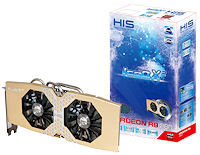 By: Hilbert Hagedoorn @ GURU3D
By: Hilbert Hagedoorn @ GURU3D
We review the new HIS Radeon R9-280 IceQ X2 OC. Yep R9 -280 You read that right, anyone remember the Radeon HD 7950? Armed with a customized PCB and their top model IceQ coolers; they factory overclocked the product and will try to get you as much value for money as they can. Follow us into this review where we’ll look at temperatures, noise, performance, Frame latency and we’ll even give Ultra High Definition gaming a go with the latest game titles on the globe.
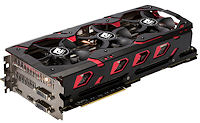 Author: SKYMTL @ Hardware Canucks
Author: SKYMTL @ Hardware Canucks
AMD rolled out their long-anticipated R9 295X2. Not only did it take NVIDIA completely by surprise but it approached cooling in a new and innovative way (for a reference card that is); instead of sticking to a sometimes-inefficient air based heatsink, AMD incorporated a water cooling setup. As a result, its dual R9 290X cores were able to operate at full speed without the throttling and it demolished everything in its path.
PowerColor’s R9 290X Devil 13 goes back to basics by utilizing virtually the same specifications as the R9 295X2 but backing things up with an infinitely more adaptable fan-based heatsink. Ditching the water cooler wasn’t easy since the Hawaii cores and 8GB memory produce an astonishing amount of heat but the Devil 13 compensates by throwing a massive amount of thermal dissipation power at the problem.

